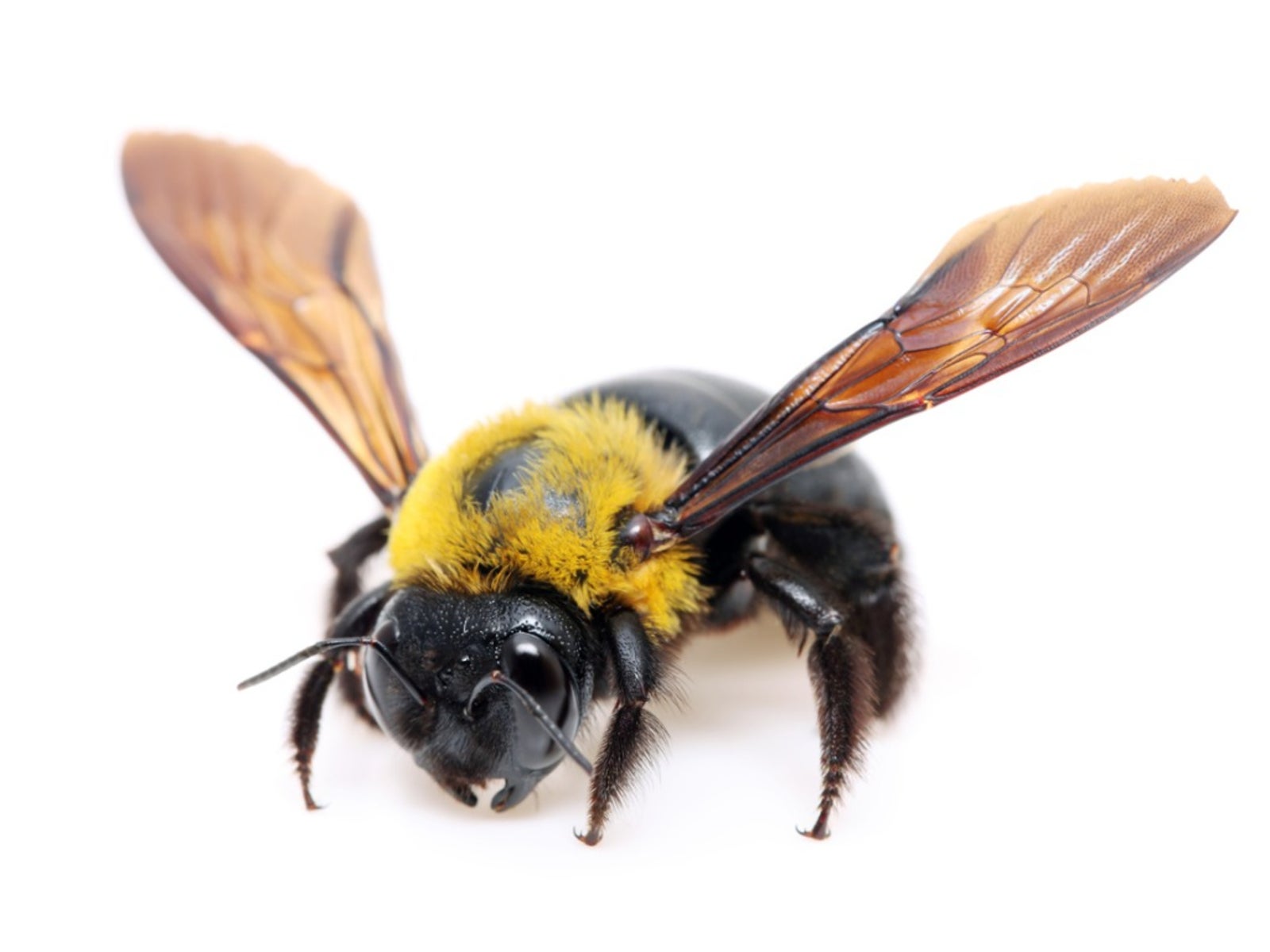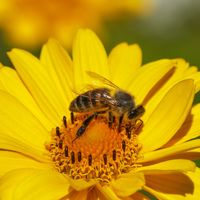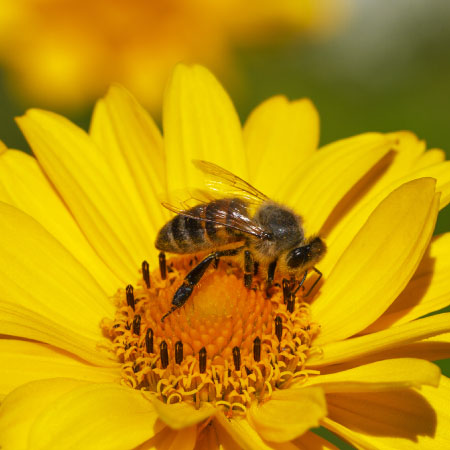Carpenter Bee Control: How To Prevent Carpenter Bee Damage


Carpenter bees look a lot like bumblebees, but their behavior is very different. You might see them hovering around the eaves of a house or wooden deck rails. Although they pose little threat to people because they rarely sting, they can cause serious structural damage to exposed wood. Read on to find out how to get rid of carpenter bees.
What are Carpenter Bees?
Although carpenter bees look a lot like bumblebees, you can easily see the difference. Both types of bees have black bodies with a covering of yellow hair. The yellow hair covers most of a bumblebee's body, while carpenter bees only have hair on their head and thorax, leaving the lower half of their body solid black. Female carpenter bees excavate a small cell off the gallery she has created, and then forms a ball of pollen inside the cell. She lays a single egg near the pollen ball and seals off the cell with a partition made of chewed wood. A few days after laying six or seven eggs in this manner, she dies. Females are most likely to sting if interrupted while they are provisioning their nests. The larvae mature six to seven weeks after the eggs hatch.
Carpenter Bee Damage
Female carpenter bees chew one half inch (1 cm.) wide holes in wood surfaces and then create tunnels, chambers, and cells for larvae within the wood. A little pile of coarse sawdust beneath the hole is a sign that carpenter bees are at work. One season's work by a single carpenter bee doesn't cause serious damage, but if several bees use the same entrance hole and build additional galleries off the main tunnel, the damage can be extensive. The bees often return to use the same hole year after year, hollowing out more galleries and tunnels. In addition to the bee damage, woodpeckers may peck at the wood in an effort to get to the larva inside, and rotting fungi may attack holes on the surface of the wood.
Carpenter Bee Control
Begin your program of carpenter bee control by painting all unfinished wood surfaces with oil or latex paint. Stain is not as effective as paint. Carpenter bees avoid freshly painted wood surfaces, but over time, the protection wears off. The residual effects from treating wood with insecticides only lasts about two weeks, so keeping wood surfaces treated is an endless and nearly impossible task. Carpenter bees don't get a lethal dose of insecticide from tunneling into insecticide-treated wood, but the insecticide does act as a deterrent. Use insecticides containing carbaryl (Sevin), cyfluthrin, or resmethrin to treat the area around existing holes. Seal the holes with a small wad of aluminum foil and then caulk about 36 to 48 hours after insecticide treatment.
Natural Carpenter Bee Repellent
If you prefer to take a natural approach, try using boric acid around the carpenter bee entry holes. Pyrethrins are natural insecticides derived from chrysanthemums. They are less toxic than most insecticides and they do a good job of repelling carpenter bees. Spray around the entry hole and then plug the hole as you would when using other insecticides.
Sign up for the Gardening Know How newsletter today and receive a free copy of our e-book "How to Grow Delicious Tomatoes".

Jackie Carroll has written over 500 articles for Gardening Know How on a wide range of topics.